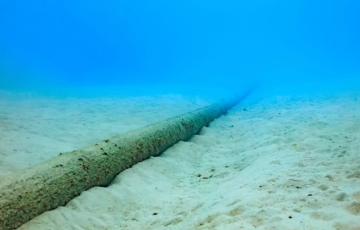Second Damaged Cable Of NATO Countries Discovered In Baltic Sea In One Day
56- 8,030

Internet speed in Lithuania decreased by a third.
A telecommunication cable between Lithuania and Sweden has broken in the Baltic Sea. The incident occurred at around 10am on November 17, the damage was discovered after the connection was lost, Andrius Šemeškevičius, technical director of Lithuanian operator Telia, reported on LRT. As a result, internet speeds in the Baltic republic dropped by a third, he said.
‘We can confirm that the internet traffic interruptions were not caused by equipment failure, but by physical damage,’ Šemeškevičius said. He added that the cable was quite old and had already broken down several times. Usually it happened close to the shore when some vessel anchored incorrectly. However, there have been no cases of sabotage so far, Šemeškevičius emphasised.
At the same time, he pointed out that this is the second cable connecting Europe and Scandinavia along the Baltic Sea bed that has been damaged within a day. At 4 a.m. on November 18, the cable linking Finland and Germany broke. The cause of the incident has not yet been determined. Šemeškevičius noted that the damaged cables intersect in a 10 m² section. ‘Since both were torn, it is obvious that there was no accidental dropping of anchor from one ship here and we may be talking about something more serious,’ he emphasised.
Germany and Finland have launched an investigation into the damage to their cable. They expressed ‘deep concern’ about the incident. ‘The fact that such an incident immediately raises suspicions of deliberate damage speaks eloquently about the instability of our times... European security is at risk not only because of Russia's aggressive war against Ukraine, but also because of hybrid warfare by malicious actors,‘ the two countries’ foreign ministries said in a statement.
The damaged C-Lion1 cable with a capacity of 144 terabytes per second runs from Finland's Santahamina to Germany's Rostock. It was commissioned in 2016 and is 1,173 kilometres long. It is the only Finnish submarine communication cable that goes directly to Central Europe and runs alongside the Russian Nord Stream pipeline, which was blown up in a sabotage in 2022. The distance between the two is several hundred metres. As a result of the cable break, data transmission between Finland and Germany was completely interrupted.
The incidents came two months after the US warned of increased Russian military activity around key undersea cables. U.S. officials said the Russian Defence Ministry was preparing a specialised unit to carry out sabotage aimed at damaging NATO countries' critical communications infrastructure.











